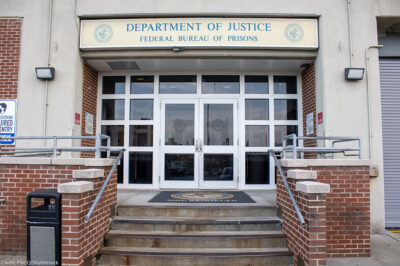Need to Trim Corrections Spending, Governor? Stop Wasting Money on the Death Penalty!
If Gov. Schwarzenegger thinks he can cut $3.5 billion from state spending on corrections, he is being unrealistic and impractical.
In his state of the state address Wednesday, Gov. Schwarzenegger promised to restore the California dream by increasing funds for education and cutting funds for prisons in the budget proposal he releases today. That’s a great theory. But his only real proposal is to outsource prison administration to private companies. The state’s powerful prison guards’ union will ensure that plan fails. Meanwhile, the governor continues to slash education, health care, and other vital services.
So let’s consider something the governor can actually do right now to make a serious dent in the corrections budget: convert all 700 death sentences in California to permanent imprisonment saving the state $1 billion over the next five years.
A slew of articles have recently documented the decline of the death penalty nationally. Death sentencing hit an all time low in 2009. As reported this week by National Public Radio, the United States had only 106 death sentences last year. Texas, a capital punishment stronghold, only sent nine people to death row. There are many reasons for the decline, chief among them the public’s growing concern over wrongful convictions and the fact that people have come to understand that permanent imprisonment — also called life without the possibility of parole — really, truly means that a person will be condemned to spend the rest of his or her life behind bars and will die in prison.
And then there’s the cost: around the country, prosecutors, legislators and voters are realizing that the death penalty is simply a costly and wasteful government program that we can’t afford.
It’s not just the practice of the death penalty that is being undermined; it’s the theory as well. As the New York Times reported this week, the American Law Institute — the brain trust of the legal community — withdrew its support for the death penalty, finding, among other things, that it “is plagued by racial disparities; is enormously expensive even as many defense lawyers are underpaid and some are incompetent; risks executing innocent people; and is undermined by the politics that come with judicial elections.”
But California, oddly enough, has become a rogue state when it comes to death sentencing.
Our great state accounted for 29 of those 106 death sentences in 2009, or 27 percent (more than double California’s share of the total U.S. population). As of December 17, the California Department of Corrections and Rehabilitation reported 697 people on death row. Judges sentenced two more people to death in December and one this week, bringing the grand total to 700, by far the most populous death row in the country and most of the world.
At the same time, the state has only executed 13 people since 1967. It takes more than 25 years for a case to move through all of the mandatory appeals. All executions have been on hold for four years as a result of legal challenges. We don’t have enough lawyers and judges to handle 700 death sentences, half of the people on death row don’t have an attorney, and the Supreme Court already spends almost one-third of its time on death penalty cases.
The system is simply overwhelmed, overburdened and overdue for change. California’s death penalty process is broken, and Gov. Schwarzenegger is allowing this ghastly and costly disaster unfold.
Meanwhile, the state is spending hundreds of millions of precious dollars trying to prop the failed system up. Housing for just one person on death row costs $90,000 more per year than housing in the general prison population (itself a hefty $50,000 a year). That means we are now paying an extra $63 million a year for death row housing. If the governor acted right now to convert all death sentences to permanent imprisonment, he could cut that much from the corrections’ budget today. Plus, we wouldn’t have to spend $400 million to build a new, expanded death row. And we would save millions more in legal fees.
The governor is right: we need to spend more money on education and less on prisons to bring back the safe, healthy and sustainable California we all dream of. One necessary step to achieving that dream: get rid of the expensive death penalty.


